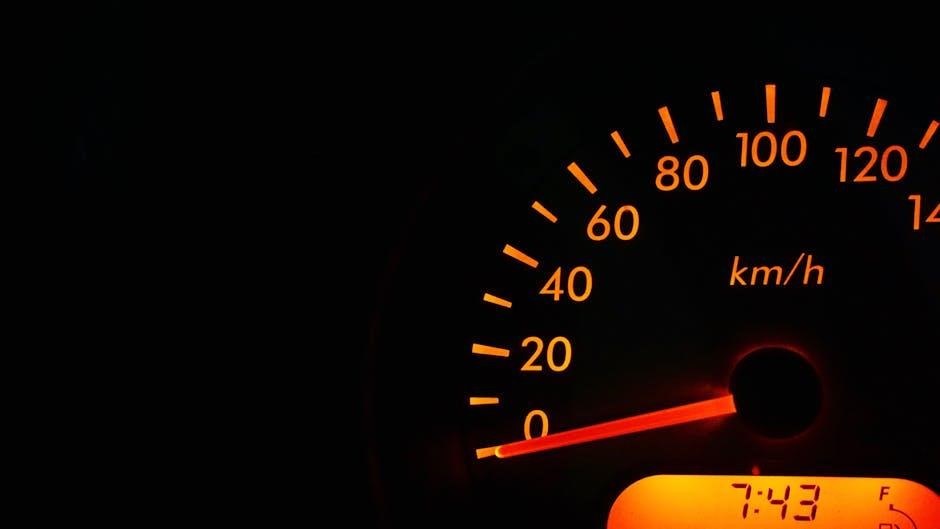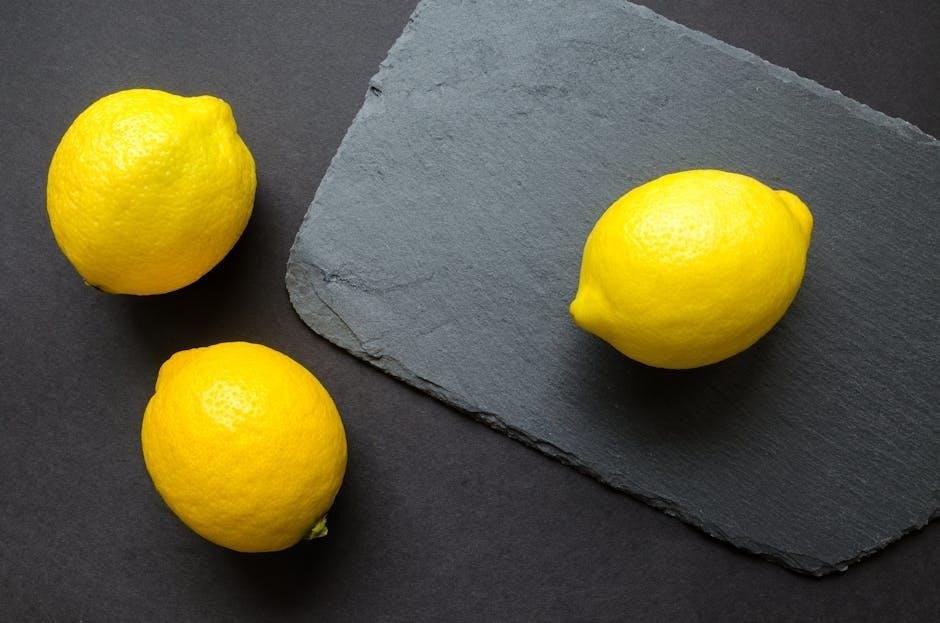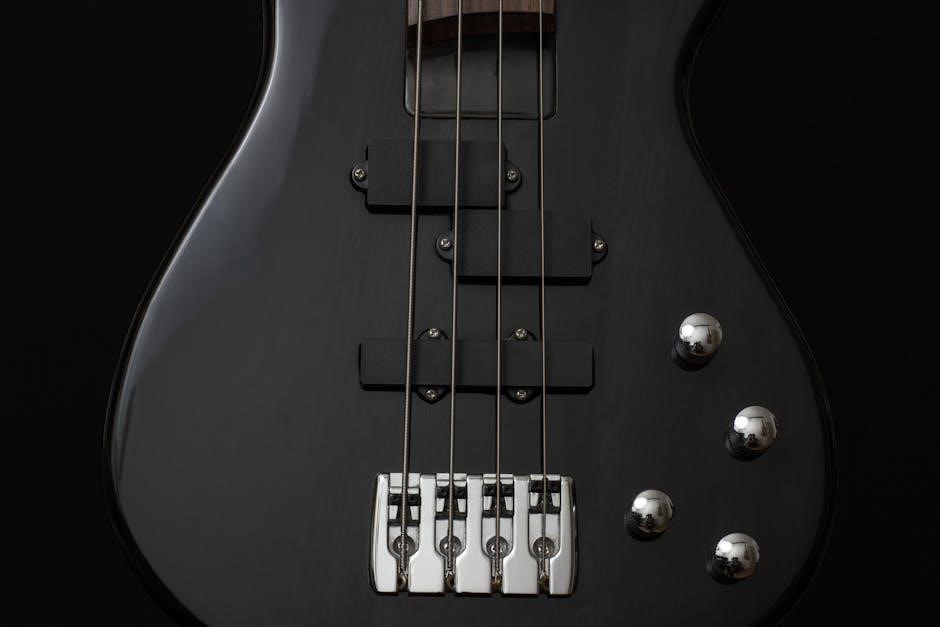Welcome to the Black & Decker Food Processor guide! This manual helps you master your kitchen appliance, offering versatile functions like chopping, slicing, and dough kneading with ease.
1.1 Overview of Black & Decker Food Processors
Black & Decker food processors are versatile kitchen appliances designed to simplify food preparation. With models like the FP1000, FP1140BD, and FP1700B, they offer features such as chopping, slicing, shredding, and kneading. These processors are built for efficiency, featuring durable construction and user-friendly controls. Whether you’re processing vegetables, meats, or dough, Black & Decker models provide consistent results. Their compact designs save counter space while delivering powerful performance. Available in various capacities, including 8-cup models, they cater to different household needs. This guide will help you understand and maximize your processor’s capabilities, ensuring optimal use and care for years to come.
1;2 Importance of Reading the Manual
Reading the Black & Decker food processor manual is essential for safe and effective use. It provides critical information on assembly, operation, and maintenance, ensuring you understand safety guidelines and optimal functionality. The manual outlines proper usage techniques, troubleshooting tips, and care instructions to prevent damage and extend the appliance’s lifespan. By reviewing the manual, you can explore the full range of features, such as chopping, slicing, and kneading, and learn how to handle specific foods. It also covers warranty details and customer support options, making it a vital resource for maximizing your processor’s performance and longevity.

Safety Precautions and Warnings
Always handle sharp blades with care and avoid hot liquids in the processor. Keep children away and follow guidelines to prevent accidents and ensure longevity.
2.1 General Safety Guidelines
Always handle the food processor with care, ensuring all parts are securely locked before operation. Avoid touching sharp blades or discs with bare hands. Keep children away while in use and never insert utensils or hands into the bowl during processing. Do not pour hot liquids directly into the processor, as this may cause damage or splashing. Regularly inspect the appliance for wear and tear. Follow the manual’s instructions for safe assembly, operation, and maintenance to prevent accidents and ensure optimal performance. Proper usage will extend the lifespan of your Black & Decker food processor.
2.2 Precautions Before First Use
Before using your Black & Decker food processor for the first time, ensure all components are unpacked and inspected for damage. Wash the bowl, blades, and discs with warm, soapy water, then rinse and dry thoroughly. Read the manual carefully to understand safety features and operation. Ensure all parts are properly assembled and locked into place. Avoid using dull or damaged blades, as they may pose a safety risk. Familiarize yourself with the controls and test the processor with a small task, like chopping a vegetable, to ensure smooth operation. Proper preparation ensures safe and effective use.

Assembly and Parts Identification
Begin by identifying the base, bowl, lid, and blades. Carefully unpack and match components to the manual’s inventory list. Ensure all parts fit securely before use.
3.1 Unpacking and Inventory of Components
When you unpack your Black & Decker food processor, carefully remove all components from the box to avoid damage. Check for the base unit, processing bowl, lid, chopping blade, shredding disc, and food pusher. Compare these items with the inventory list provided in the manual to ensure no parts are missing. Handle sharp blades and discs with care to prevent injury. Store packaging materials for future use or transportation. Once unpacked, refer to the manual for a detailed description of each part and its function to ensure proper assembly and operation.
3.2 Identifying Key Parts and Features
Familiarize yourself with the key components of your Black & Decker food processor. The base unit houses the motor and controls. The processing bowl is where food is prepared, and the lid ensures safe operation. The chopping blade is used for chopping and mixing, while the shredding disc handles shredding tasks. The food pusher guides ingredients through the feed chute safely. Additional features may include multiple speed settings, pulse function, and interchangeable blades. Understanding these parts will help you use the processor efficiently and explore its full potential for various kitchen tasks.

Operating the Food Processor
Mastering your Black & Decker food processor involves understanding its basic controls and functions. Use the speed settings and pulse feature to process ingredients with precision and efficiency.
4.1 Basic Controls and Functions
Black & Decker food processors feature intuitive controls designed for ease of use. The basic functions include a power button, speed settings (low and high), and a pulse option for precise chopping. The dough blade function allows for efficient kneading. Safety features like automatic shut-off prevent overload. The feed chute enables easy addition of ingredients while processing. Familiarize yourself with these controls to optimize performance and achieve desired results for various tasks, from shredding to mixing. Proper use of these functions ensures safe and effective food processing.
4.2 Step-by-Step Guide to Processing Food
Processing food with your Black & Decker food processor is straightforward. Start by preparing ingredients, ensuring they are washed, peeled, and chopped into manageable sizes. Select the appropriate blade or disc for your task. Add ingredients to the bowl, aligning with the max capacity. Secure the lid and choose the desired function (chop, slice, shred, or dough). Press the button to begin processing. For precise results, use the pulse function. Monitor progress through the clear lid, stopping to scrape sides if needed. Once done, turn off and unplug the processor before cleaning. Always follow these steps for safe, efficient food preparation.

Chopping, Slicing, and Shredding
This chapter covers essential techniques for processing ingredients. Learn to chop herbs finely, slice fruits evenly, and shred vegetables or cheese with precision using the right blade attachments.
5.1 Chopping Vegetables and Herbs
Chopping vegetables and herbs with your Black & Decker food processor is quick and efficient. Use the pulse function for precise control, ensuring even results without over-processing. Place chopped vegetables or herbs in the bowl, secure the lid, and select the appropriate blade. For delicate herbs, use short pulses to avoid bruising. Harder vegetables like carrots or beets may require longer processing. Always supervise the process to achieve your desired texture. This feature is ideal for preparing fresh ingredients for salads, soups, or marinades. Remember to handle sharp blades with care to ensure safety.
5.2 Slicing Fruits and Vegetables
Slicing fruits and vegetables with your Black & Decker food processor is a breeze. Attach the slicing disc and align the feed chute for consistent results. Place the fruit or vegetable upright in the chute, ensuring it’s centered for even slicing. Apply gentle pressure while processing to maintain uniform thickness. For delicate items like strawberries or bananas, use the pulse function to prevent tearing. Harder produce, such as potatoes or zucchinis, can be sliced continuously; Always supervise the process to achieve your desired thickness. This feature is perfect for salads, snacks, or preparing uniform ingredients for cooking.
5.3 Shredding Cheese and Vegetables
Shredding cheese and vegetables with your Black & Decker food processor is efficient and precise. Attach the shredding disc and position the feed chute. Cut larger items into manageable sizes to fit the chute. Place the cheese or vegetable upright and use the food pusher to guide it gently through the chute. Avoid applying too much pressure, as this can cause uneven shredding. For softer cheeses like mozzarella or harder vegetables like carrots, the processor works seamlessly. Use the pulse function for better control, especially for smaller quantities. This feature is ideal for salads, baked dishes, or adding texture to recipes.
Kneading and Mixing
Your Black & Decker food processor excels at kneading dough and mixing batter with the dough blade attachment, making it a versatile tool for baking and cooking.
6.1 Using the Dough Blade for Kneading
The dough blade attachment on your Black & Decker food processor is designed for efficient kneading of bread, pizza, or pasta dough. Attach the blade securely, ensuring it clicks into place. Add ingredients like flour, yeast, and water to the bowl. Use the pulse function for initial mixing, then switch to continuous operation for kneading. The blade’s unique design mimics hand kneading, saving time and effort. Always use the feed chute to add ingredients gradually, and avoid overloading the processor. This feature makes homemade dough preparation quick and effortless, ensuring consistent results every time.
6.2 Mixing Batters and Dough
Your Black & Decker food processor excels at mixing batters and dough for recipes like cakes, pancakes, and bread. Start by adding dry ingredients to the bowl, then gradually incorporate wet ingredients. Use the pulse function for initial mixing to avoid splashing. Switch to continuous mode for smooth, even results. For thicker doughs, use the dough blade, while the multipurpose blade works best for lighter batters. Scrape the bowl as needed to ensure all ingredients are well combined. Avoid overloading the processor, as this can affect performance. This feature simplifies mixing, delivering consistent results for various baked goods.
Cleaning and Maintenance
Regularly clean the bowl, blades, and lid with warm soapy water. Dry thoroughly to prevent rust. Check for worn parts and replace as needed.
7.1 Cleaning the Processor After Use
After each use, disassemble the processor, including the bowl, lid, and blades. Wash all parts with warm, soapy water using a soft sponge. Avoid using abrasive cleaners or scouring pads, as they may damage the surfaces. Rinse thoroughly and dry with a clean towel to prevent rust. For tough food residue, soak parts in warm water before cleaning. Regular cleaning ensures optimal performance and prevents bacterial growth. Always refer to the manual for specific cleaning instructions for your model.
7.2 Regular Maintenance Tips
Regular maintenance ensures your Black & Decker food processor performs optimally. After cleaning, dry all parts thoroughly to prevent rust. Lubricate moving parts, like the gear or motor shaft, periodically to maintain smooth operation. Check blades and discs for dullness or damage; replace them as needed. Store the processor in a dry place to prevent moisture buildup. Avoid exposing electrical components to water. Descale the bowl if mineral deposits form. Follow the manual’s recommendations for maintenance schedules to extend the appliance’s lifespan and ensure consistent performance.

Troubleshooting Common Issues
Troubleshoot your Black & Decker food processor by identifying common problems like motor issues, blade damage, or overloading. Refer to the manual for solutions and repair guidance.
8.1 Processor Not Turning On
If your Black & Decker food processor fails to turn on, check the power supply first. Ensure the appliance is properly plugged into a working electrical outlet. Verify that the power cord is undamaged and securely connected to both the processor and the outlet. If using an extension cord, test it with another device. Check your home’s circuit breaker or fuse box to ensure no breakers have tripped or fuses blown. Consult the user manual for specific troubleshooting steps tailored to your model. If the issue persists, contact Black & Decker customer support for further assistance or repair options.
8.2 Jamming or Overloading
If your Black & Decker food processor jams or overloaded, stop operation immediately. Check the food capacity and ensure you haven’t exceeded the recommended limit. Large or hard ingredients may cause blockages; cut them into smaller, manageable pieces. Verify that the lid is securely locked to prevent improper alignment. If jammed, turn off the processor, unplug it, and carefully remove any obstructing food. Use the correct blade for the task to avoid overloading. For persistent issues, consult your user manual or contact customer support for assistance. Regularly cleaning and maintaining the processor can also help prevent such problems.
8.3 Noise or Vibration Issues
If your Black & Decker food processor emits unusual noise or vibrates excessively, ensure the unit is placed on a stable, even surface. Check that all parts are properly assembled and aligned. Excessive vibration may occur if the bowl or lid is not securely locked. Hard or large food items can also cause noise; process them in smaller pieces or at a slower speed. If the issue persists, refer to your manual for troubleshooting or contact customer support. Regular cleaning and ensuring all components are free from food residue can help maintain smooth operation and reduce noise.

Accessories and Attachments
Black & Decker food processors come with interchangeable blades and discs for tasks like chopping, slicing, and shredding. Optional accessories, such as extra bowls and lids, enhance functionality and versatility.
9.1 Compatible Blades and Discs
Black & Decker food processors are equipped with a variety of interchangeable blades and discs, each designed for specific tasks. The stainless steel chopping blade is perfect for finely chopping vegetables, herbs, and meats, while the slicing disc allows for precise adjustments in thickness. A shredding disc is ideal for cheeses and vegetables, and the dough blade is designed for heavy-duty kneading. These attachments are durable, easy to install, and dishwasher-safe, ensuring long-term performance. Always refer to your model’s manual to confirm compatibility and ensure optimal functionality for your cooking needs.
9.2 Optional Accessories for Enhanced Functionality
Optional accessories for Black & Decker food processors can significantly enhance their versatility. Additional feeding tubes or specialized discs, such as a julienne disc, can expand your processing capabilities. Replacement bowls or lids are available for added convenience, while storage cases help organize blades and discs. Some models may also support attachments like citrus juicers or egg slicers. These accessories are designed to fit specific models, so ensure compatibility before purchasing. Visit the official Black & Decker website or authorized retailers to explore accessories tailored to your food processor model for optimal performance and functionality.

Storage and Organization
Store your Black & Decker food processor in a dry, cool place. Use the original packaging or a storage case to protect components and accessories.
10.1 Proper Storage of the Processor
After cleaning, store the Black & Decker food processor in a cool, dry place. Use the original packaging or a sturdy container to protect it from dust and damage. Ensure all parts, including blades and discs, are completely dry before storage. Avoid exposing the processor to direct sunlight or extreme temperatures. Do not store the processor in humid environments or near open flames. For models like FP1700B or FP6010, refer to specific storage instructions in the manual to maintain optimal condition and longevity of the appliance.
10.2 Organizing Accessories and Parts
Organize Black & Decker food processor accessories in labeled containers or the original packaging to prevent loss. Store blades, discs, and attachments separately to avoid damage. Use a designated storage box or drawer to keep parts tidy; Keep the processor and accessories in a cool, dry place, away from direct sunlight. Clean and dry all components before storage to prevent food residue buildup. For models like FP1700B or FP6010, refer to the manual for specific storage recommendations to maintain functionality and ensure longevity of your Black & Decker food processor.

Warranty and Customer Support
Black & Decker offers a limited warranty for food processors, covering defects in material and workmanship. Visit their official website or contact customer support for assistance and repairs.
11.1 Understanding the Warranty Terms
Black & Decker food processors are backed by a limited warranty that covers defects in materials and workmanship; The warranty period varies by model but typically ranges from 1 to 5 years. It ensures free repair or replacement of defective parts during the warranty period. However, the warranty does not cover damage caused by misuse, normal wear and tear, or improper maintenance. For detailed terms, refer to the official Black & Decker website or the manual provided with your food processor. Understanding these terms helps you make informed decisions and ensures optimal product performance.
11.2 Contacting Black & Decker Customer Service
For assistance with your Black & Decker food processor, visit their official website or refer to the manual for contact details. You can reach customer service via phone, email, or live chat. The website also provides a support center with FAQs, troubleshooting guides, and repair request options. Additionally, online platforms like ManualsLib offer access to user manuals and warranty information. For specific inquiries, visit ManualsLib or Manua.ls. Ensure to have your model number ready for faster assistance, such as for the FP1700B model, available at this link.

Downloading the Manual
Visit the official Black & Decker website or platforms like ManualsLib to download your specific food processor manual. Use your model number, such as FP1700B, to find the correct guide.
12.1 Finding the Correct Model Manual
To locate the correct manual for your Black & Decker food processor, visit the official Black & Decker website or trusted platforms like ManualsLib. Enter your device’s model number, such as FP1700B or FP1600B, in the search bar. Ensure the model number matches your appliance, typically found on the base or in the packaging. This ensures you access the precise guide for your specific food processor, covering its unique features and functions. Having the correct manual guarantees optimal performance and safe operation of your appliance.
12.2 Steps to Download the Manual Online
Visit the official Black & Decker website or reputable platforms like ManualsLib. Navigate to the “Support” or “Manuals” section. Enter your food processor’s model number, such as FP1700B or FP1600B, in the search bar. Select your model from the results to access the manual. Click the “Download” button to save the PDF file. Ensure your device has a PDF reader installed to view the manual. For convenience, you can also search directly on ManualsLib by filtering under the “Food Processor” category. Always verify the model number for accuracy to ensure you download the correct guide.

